| BuPROPion: Dosage, Mechanism/Onset of Action, Half | 您所在的位置:网站首页 › hclx › BuPROPion: Dosage, Mechanism/Onset of Action, Half |
BuPROPion: Dosage, Mechanism/Onset of Action, Half
|
Boxed Warning
Suicidality and antidepressant drugs: Antidepressants increased the risk of suicidal thoughts and behavior in children, adolescents, and young adults in short-term trials. These trials did not show an increase in the risk of suicidal thoughts and behavior with antidepressant use in subjects aged 65 and older. In patients of all ages who are started on antidepressant therapy, monitor closely for worsening and for emergence of suicidal thoughts and behaviors. Advise families and caregivers of the need for close observation and communication with the prescriber. Bupropion is not approved for use in pediatric patients. Dosage FormsExcipient information presented when available (limited, particularly for generics); consult specific product labeling. [DSC] = Discontinued product Tablet, Oral, as hydrochloride: Wellbutrin: 75 mg [DSC], 100 mg [DSC] Generic: 75 mg, 100 mg Tablet Extended Release 12 Hour, Oral, as hydrochloride: Buproban: 150 mg [DSC] Wellbutrin SR: 100 mg, 150 mg, 200 mg Zyban: 150 mg [DSC] Generic: 100 mg, 150 mg, 200 mg Tablet Extended Release 24 Hour, Oral, as hydrobromide: Aplenzin: 174 mg, 348 mg, 522 mg Tablet Extended Release 24 Hour, Oral, as hydrochloride: Forfivo XL: 450 mg Wellbutrin XL: 150 mg, 300 mg Generic: 150 mg, 300 mg, 450 mg Pharmacology Mechanism of ActionAminoketone antidepressant structurally different from all other marketed antidepressants; like other antidepressants the mechanism of bupropion's activity is not fully understood. Bupropion is a relatively weak inhibitor of the neuronal uptake of norepinephrine and dopamine, and does not inhibit monoamine oxidase or the reuptake of serotonin. Metabolite inhibits the reuptake of norepinephrine. The primary mechanism of action is thought to be dopaminergic and/or noradrenergic. Pharmacokinetics/Pharmacodynamics AbsorptionRapid DistributionVd: ~20 to 47 L/kg (Laizure 1985) MetabolismExtensively hepatic via CYP2B6 to hydroxybupropion; non-CYP-mediated metabolism to erythrohydrobupropion and threohydrobupropion. Metabolite activity ranges from 20% to 50% potency of bupropion. ExcretionUrine (87%, primarily as metabolites); feces (10%, primarily as metabolites) Onset of Action1 to 2 weeks Time to PeakBupropion: Immediate release: Within 2 hours; 12-hour extended release (sustained release): Within 3 hours; 24-hour extended release: ~5 hours; 12 hours (fed) Metabolite: Hydroxybupropion: Immediate release: ~3 hours; Extended release: ~6 to 7 hours Duration of Action1 to 2 days Half-Life EliminationDistribution: 3 to 4 hours Elimination: Hydrochloride salt: ~21 hours after chronic dosing (± 9 hours); Metabolites (after a single dose): Hydroxybupropion: 20 ± 5 hours; Erythrohydrobupropion: 33 ± 10 hours; Threohydrobupropion: 37 ± 13 hours Hydrobromide salt: 21 ± 7 hours; Metabolites: Hydroxybupropion: 24 ± 5 hours; Erythrohydrobupropion: 31 ± 8 hours; Threohydrobupropion: 51 ± 9 hours Protein Binding84% Use in Specific Populations Special Populations: Renal Function ImpairmentElimination of bupropion and/or major metabolites may be reduced. Special Populations: Hepatic Function ImpairmentElimination of hydroxybupropion is reduced in patients with alcoholic liver disease. Bupropion Cmax increased 70%, AUC increased 3-fold, and mean half-life increased to 29 hours in patients with severe hepatic impairment. Mean half-life for active metabolites increased 2- to 5-fold in patients with severe hepatic impairment. Special Populations: ElderlyMay be at risk of accumulation of bupropion and its metabolites. Special Populations: GenderAUC was approximately 13% higher in men. Use: Labeled IndicationsMajor depressive disorder (unipolar [excluding Zyban]): Treatment of major depressive disorder (MDD) Seasonal affective disorder (24-hour extended release [Aplenzin, Wellbutrin XL]): Prevention of seasonal major depressive episodes in patients with a diagnosis of seasonal affective disorder (SAD) Smoking cessation (12-hour extended release [sustained release; Zyban]): As an aid to smoking cessation treatment Use: Off LabelAttention-deficit/hyperactivity disorderbyes Data from a meta-analysis support the use of bupropion in the treatment of attention-deficit/hyperactivity disorder (ADHD) in adults Maneeton 2011. Based on the Bipolar depressionbyes Data from a meta-analysis support the use of bupropion in the treatment of bipolar depression. Despite demonstrating the efficacy of bupropion, the authors of this meta-analysis caution that there is a risk of switching from depression to mania when bupropion is used for this indication Li 2016. Based on the 2002 American Psychiatric Association (APA) guideline for the treatment of patients with bipolar disorder and the 2018 CANMAT and International Society for Bipolar Disorders guidelines for the management of patients with bipolar disorder, augmentation with bupropion is second-line for the management of bipolar depression that does not respond to preferred treatments. Due to inconsistencies in bupropion augmentation clinical trial results, the World Federation of Societies of Biological Psychiatry guidelines recommend bupropion augmentation of lithium or valproic acid as an option only in patients who are unresponsive to treatments with greater evidence. Selective serotonin reuptake inhibitor-induced sexual dysfunction, augmentationbyes Data from two randomized, double-blind, placebo-controlled trials support the use of bupropion as an augmentation strategy for increasing sexual desire, arousal, lubrication, orgasm, and satisfaction in patients with selective serotonin reuptake inhibitor (SSRI)-induced sexual dysfunction who have achieved remission on a serotonergic antidepressant Clayton 2004, Safarinejad 2011. Based on the APA practice guideline for the treatment of patients with major depressive disorder, bupropion given for SSRI-induced sexual dysfunction is recommended for the management of side effects of arousal, erectile dysfunction, or orgasm dysfunction. ContraindicationsHypersensitivity to bupropion or any component of the formulation; seizure disorder; history of anorexia/bulimia; patients undergoing abrupt discontinuation of ethanol or sedatives, including benzodiazepines, barbiturates, or antiepileptic drugs; use of MAO inhibitors (concurrently or within 14 days of discontinuing either bupropion or the MAO inhibitor); initiation of bupropion in a patient receiving linezolid or intravenous methylene blue 24-hour extended release: Additional contraindications: Other conditions that increase seizure risk, including arteriovenous malformation, severe head injury, severe stroke, CNS tumor, CNS infection Canadian labeling: Additional contraindications (not in US labeling): Concurrent use or use within 14 days of thioridazine; concurrent use with other dosage forms of bupropion Dosage and Administration Dosing: AdultNote: Bupropion is available as hydrochloride and hydrobromide salts. Doses are expressed in this monograph as hydrochloride salt except where noted as bupropion hydrobromide salt. Bupropion hydrochloride 150 mg is equivalent to about 174 mg of bupropion hydrobromide. Bupropion is available as immediate release, 12-hour extended release (sustained release), and 24-hour extended release tablets. Attention-deficit/hyperactivity disorder (off-label use): Note: For patients with comorbid mood disorders or as an alternative agent for patients with substance use disorders (Brent 2019; CANMAT [Bond 2012]). 12-hour extended release (sustained release): Oral: Initial: 100 mg once daily in the morning; increase in 100 mg/day increments at intervals of 3 to 4 weeks based on response and tolerability up to 200 mg twice daily (Bukstein 2019; Reimherr 2005; Wilens 2001). 24-hour extended release: Oral: Initial: 150 mg once daily in the morning for 1 week; increase to 300 mg once daily for 3 weeks; may further increase dose based on response and tolerability up to 450 mg once daily (Wilens 2005). Bipolar depression (off-label use): 12-hour extended release (sustained release): Oral: Initial: 100 mg once daily as an adjunct to mood stabilizer; increase based on response and tolerability at 2-week intervals up to 450 mg/day in 2 divided doses (average dose in clinical trials was 250 mg/day) (APA 2002; Grossman 1999; McIntyre 2002). Major depressive disorder (unipolar): Note: Treatment should be periodically evaluated at appropriate intervals to ensure lowest effective dose is used. Slower dose titrations may be indicated based on patient care setting, symptom severity, and concern for side effects. May also be used as an alternative agent for patients with SSRI-induced sexual dysfunction (APA 2010). Immediate release: Oral: Initial: 100 mg twice daily; after 3 days may increase to the usual dose of 100 mg 3 times a day; if no clinical improvement after several weeks, may increase to a maximum dose of 450 mg/day in 3 or 4 divided doses; do not exceed 150 mg in a single dose. 12-hour extended release (sustained release): Oral: Initial: 150 mg daily in the morning; if tolerated, after 3 days, may increase to a target dose of 150 mg twice daily; if no clinical improvement after several weeks, may increase to a maximum dose of 200 mg twice daily; do not exceed 200 mg in a single dose. 24-hour extended release: Oral: Hydrochloride salt: Initial: 150 mg once daily in the morning; if tolerated, may increase as early as day 4 of dosing to 300 mg once daily; if no clinical improvement after 2 weeks, may increase to 450 mg once daily. Hydrobromide salt: Initial: 174 mg once daily in the morning; may increase as early as day 4 of dosing to 348 mg once daily (target dose). Seasonal affective disorder (SAD): 24-hour extended release: Oral: Hydrochloride salt: Initial: 150 mg once daily in the morning; if tolerated, may increase after 7 days to 300 mg once daily in the morning. Hydrobromide salt: Initial: 174 mg once daily in the morning; if tolerated, may increase after 7 days to 348 mg once daily in the morning. Note: Prophylactic treatment should be reserved for patients with frequent depressive episodes and/or significant impairment. Initiate treatment in the autumn prior to symptom onset, and discontinue in early spring with dose tapering. Doses >300 mg daily (hydrochloride salt) or >348 mg daily (hydrobromide salt) have not been studied in SAD. Selective serotonin reuptake inhibitor (SSRI)-induced sexual dysfunction, augmentation (off-label use): 12-hour extended release (sustained release): Oral: Initial: 150 mg once daily for the first 3 days; increase to 150 mg twice daily, based on response and tolerability (Clayton 2004; Safarinejad 2011). Smoking cessation: Note: May be used as monotherapy or in combination with nicotine replacement therapy (Siu 2015): 12-hour extended release (sustained release): Oral: Initial: 150 mg once daily for 3 days; increase to 150 mg twice daily (maximum dose: 300 mg/day). For patients who do not tolerate titration to the full dose, consider continuing 150 mg once daily; the lower dose has shown efficacy (Hughes 2014). Note: Therapy should begin at least 1 week before target quit date. Target quit dates are generally in the second week of treatment. If patient successfully quits smoking after 7 to 12 weeks but is not ready to discontinue treatment, may consider ongoing maintenance therapy based on individual patient risk:benefit. Efficacy of maintenance therapy (300 mg daily) has been demonstrated for up to 1 year. Conversely, if significant progress has not been made by the seventh week of therapy, success is unlikely; consider combination therapy, or discontinuation and use of an alternative agent. Dosing conversion: Immediate-, 12-hour (sustained release), and 24-hour extended-release formulations (hydrochloride salt): Convert using same total daily dose (up to the maximum recommended dose for a given dosage form), but adjust frequency as indicated for immediate (3 to 4 times daily), 12-hour extended (sustained release) (twice daily), or 24-hour extended (once daily) release products. Hydrochloride salt formulation (immediate release, 12-hour (sustained release), or 24-hour extended release) to hydrobromide salt formulation (extended release): Bupropion hydrochloride 150 mg daily is equivalent to bupropion hydrobromide 174 mg once daily. Bupropion hydrochloride 300 mg daily is equivalent to bupropion hydrobromide 348 mg once daily. Bupropion hydrochloride 450 mg daily is equivalent to bupropion hydrobromide 522 mg once daily. MAOI recommendations: Switching to or from an MAOI antidepressant: Allow 14 days to elapse between discontinuing an MAOI intended to treat depression and initiation of bupropion. Allow 14 days to elapse between discontinuing bupropion and initiation of an MAOI intended to treat depression. Discontinuation of therapy: Upon discontinuation of antidepressant therapy, gradually taper the dose (eg, over 2 to 4 weeks) to allow for the detection of reemerging symptoms. Withdrawal symptoms resulting from abrupt discontinuation are unlikely because bupropion has minimal serotonergic activity (APA 2010). Dosing: GeriatricRefer to adult dosing; use with caution. Discontinuation of therapy: Refer to adult dosing. MAOI recommendations: Refer to adult dosing. Dosing: PediatricNote: Bupropion is available as either hydrochloride or hydrobromide (Aplenzin; not used in pediatric patients) salt formulations which are not interchangeable on a mg per mg basis; dosage expressed in terms of the salt formulation. Bupropion is available as immediate-release, 12-hour sustained-release, and 24-hour extended-release tablets. Patients must be able to swallow sustained or extended-release products whole. Attention-deficit/hyperactivity disorder: Limited data available: Children ≥6 years (Dopheide 2009; Pliszka 2007) and Adolescents: Oral: Immediate release, hydrochloride salts: Initial: 3 mg/kg/day in 2 to 3 divided doses; maximum initial dose: 150 mg/day; titrate dose as needed to a maximum daily dose of 6 mg/kg/day or 300 mg/day with no single dose >150 mg (Dopheide 2009; Pliszka 2007). 12-hour sustained release (Wellbutrin SR) and 24-hour extended release (Wellbutrin XL), hydrochloride salts: May be used in place of regular tablets, once the daily dose is titrated using the immediate release product and the titrated 12-hour dosage corresponds to a sustained release tablet (Wellbutrin SR) or the 24-hour dosage range corresponds to an extended release tablet size (Wellbutrin XL) Depression, refractory to SSRIs: Limited data available; Note: May be most beneficial in patients with comorbid ADHD, conduct disorder, substance abuse problems or who want to quit smoking (Dopheide 2006). Treatment should be periodically evaluated at appropriate intervals to ensure lowest effective dose is used. Immediate release, hydrochloride salt: Children 8 to ≤11 years: Oral: Initial: 37.5 mg twice daily; titrate to response; usual dosage range: 100 to 400 mg/day (Dopheide 2006) 12-hour sustained release, hydrochloride salt (Wellbutrin SR): Children ≥11 years and Adolescents: Oral: Initial: 2 mg/kg up to 100 mg administered as a morning dose; may titrate as needed every 2 to 3 weeks using the following titration schedule: Step 2: Increase up to 3 mg/kg every morning; Step 3: Increase up to 3 mg/kg every morning and 2 mg/kg at 5 pm (17:00); Step 4: Increase up to 3 mg/kg/dose twice daily; maximum dose: 150 mg; reported mean effective dose: Morning: 2.2 mg/kg and afternoon: 1.7 mg/kg (Daviss 2001) 24-hour extended release, hydrochloride salt (Wellbutrin XL): Children ≥12 years and Adolescents: Oral: Initial: 150 mg once daily; may titrate after 2 weeks to 300 mg once daily if adequate response not achieved; dosing based on a pharmacokinetic study in eight patients with depression (Daviss 2006); doses as high as 400 mg/day have been reported (Dopheide 2006); may also be used once the daily dose is titrated using the immediate release product and the 24-hour dosage range corresponds to an extended release tablet size (Wellbutrin XL). Smoking cessation: Limited data available: Adolescents ≥14 years and ≥40.5 kg: 12-hour sustained release, hydrochloride salt (Buproban, Zyban): Oral: Initial: 150 mg once daily for 3 days; increase to 150 mg twice daily; treatment should start while the patient is still smoking in order to allow drug to reach steady-state levels prior to smoking cessation; generally, patients should stop smoking during the second week of treatment; maximum daily dose: 300 mg/day; short-term efficacy was demonstrated in 104 adolescents who received therapy for 7 weeks with cessation counseling (Muramoto 2007). Dosing conversion between hydrochloride salt immediate (Wellbutrin), 12-hour sustained (Wellbutrin SR), and 24-hour extended-release (Wellbutrin XL) products: Convert using same total daily dose (up to the maximum recommended dose for a given dosage form), but adjust frequency as indicated for 12-hour sustained (twice daily) or for 24-hour extended (once daily) release products. Discontinuation of therapy: Upon discontinuation of antidepressant therapy, gradually taper the dose to allow for the detection of reemerging symptoms. Withdrawal symptoms resulting from abrupt discontinuation are unlikely because bupropion has minimal serotonergic activity (APA 2010). MAO inhibitor recommendations: Switching to or from an MAO inhibitor antidepressant: Allow 14 days to elapse between discontinuing an MAO inhibitor intended to treat depression and initiation of bupropion. Allow 14 days to elapse between discontinuing bupropion and initiation of an MAO inhibitor intended to treat depression. AdministrationOral: May be taken without regard to meals. The manufacturer states that tablets should be swallowed whole; do not crush, chew, or divide. Immediate release: Administer 3 to 4 times daily with at least 6 hours between successive doses; do not exceed 150 mg in a single dose. 12-hour extended release (sustained release): Administer 2 times daily with at least 8 hours between successive doses; do not exceed 200 mg in a single dose. 24-hour extended release: Administer once daily with at least 24 hours between successive doses. StorageStore at 15°C to 30°C (59°F to 86°F). Protect from light and moisture. BuPROPion Images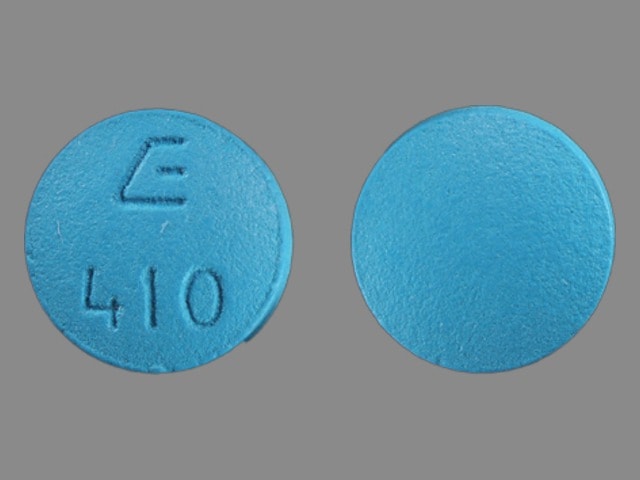 bupropion 100 mg
bupropion 100 mg
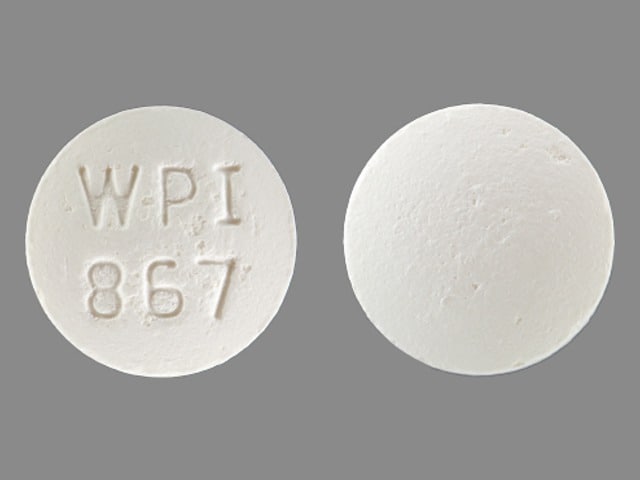 bupropion 150 mg
bupropion 150 mg
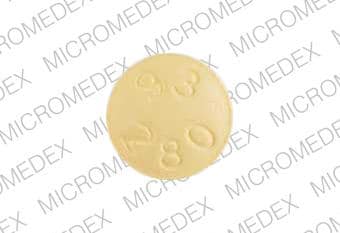 bupropion 75 mg
bupropion 75 mg
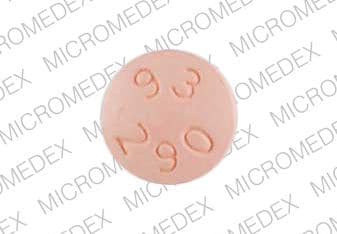 bupropion 100 mg
bupropion 100 mg
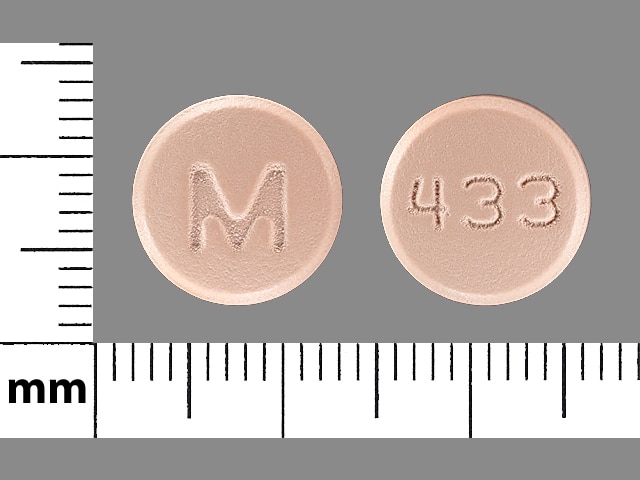 bupropion 75 mg
bupropion 75 mg
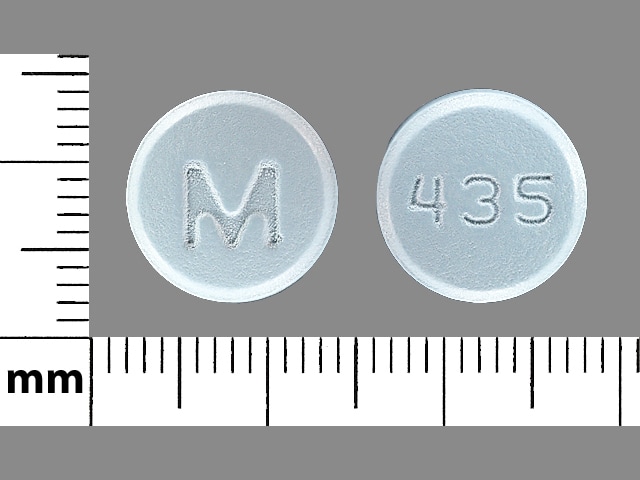 bupropion 100 mg
View more images
Drug Interactions
bupropion 100 mg
View more images
Drug Interactions
Agents With Seizure Threshold Lowering Potential: BuPROPion may enhance the neuroexcitatory and/or seizure-potentiating effect of Agents With Seizure Threshold Lowering Potential. Monitor therapy Ajmaline: CYP2D6 Inhibitors (Strong) may increase the serum concentration of Ajmaline. Monitor therapy Alcohol (Ethyl): May enhance the adverse/toxic effect of BuPROPion. Specifically, seizure threshold may be lowered. BuPROPion may enhance the adverse/toxic effect of Alcohol (Ethyl). Specifically, alcohol tolerance may decrease during treatment. Management: Patients receiving bupropion should be advised to minimize or avoid alcohol consumption due to possible lower alcohol tolerance, and lower seizure threshold associated with heavy alcohol consumption/abrupt discontinuation of heavy consumption. Consider therapy modification Amifampridine: Agents With Seizure Threshold Lowering Potential may enhance the neuroexcitatory and/or seizure-potentiating effect of Amifampridine. Monitor therapy Antihepaciviral Combination Products: May decrease the serum concentration of BuPROPion. Monitor therapy Anti-Parkinson Agents (Dopamine Agonist): May enhance the adverse/toxic effect of BuPROPion. Monitor therapy ARIPiprazole: CYP2D6 Inhibitors (Strong) may increase the serum concentration of ARIPiprazole. Management: See full interaction monograph for details. Consider therapy modification ARIPiprazole Lauroxil: CYP2D6 Inhibitors (Strong) may increase serum concentrations of the active metabolite(s) of ARIPiprazole Lauroxil. Management: Please refer to the full interaction monograph for details concerning the recommended dose adjustments. Consider therapy modification AtoMOXetine: CYP2D6 Inhibitors (Strong) may increase the serum concentration of AtoMOXetine. Management: Initiate atomoxetine at a reduced dose (adult doses -- patients up to 70kg: 0.5mg/kg/day; patients 70kg or more: 40mg/day) in patients receiving a strong CYP2D6 inhibitor. Consider therapy modification Benzhydrocodone: CYP2D6 Inhibitors (Strong) may decrease serum concentrations of the active metabolite(s) of Benzhydrocodone. Monitor therapy Brexanolone: BuPROPion may enhance the CNS depressant effect of Brexanolone. Monitor therapy Brexpiprazole: CYP2D6 Inhibitors (Strong) may increase the serum concentration of Brexpiprazole. Management: Reduce brexpiprazole dose to 50% of usual with a strong CYP2D6 inhibitor, reduce to 25% of usual if used with both a strong CYP2D6 inhibitor and a CYP3A4 inhibitor; these recommendations do not apply if treating major depressive disorder. Consider therapy modification Citalopram: BuPROPion may enhance the adverse/toxic effect of Citalopram. Specifically, the risk for seizures and serotonin syndrome may be increased with this combination. BuPROPion may increase the serum concentration of Citalopram. Management: Initiate citalopram at the lower end of the normal dose range in patients receiving bupropion and consider limiting the maximum citalopram adult dose to 20 mg/day during concomitant bupropion treatment. Consider therapy modification CloZAPine: CYP2D6 Inhibitors (Strong) may increase the serum concentration of CloZAPine. Monitor therapy Codeine: CYP2D6 Inhibitors (Strong) may diminish the therapeutic effect of Codeine. These CYP2D6 inhibitors may prevent the metabolic conversion of codeine to its active metabolite morphine. Consider therapy modification CYP2B6 Inducers (Moderate): May decrease the serum concentration of CYP2B6 Substrates (High risk with Inducers). Monitor therapy CYP2B6 Inhibitors (Weak): May increase the serum concentration of BuPROPion. Monitor therapy CYP2D6 Substrates (High risk with Inhibitors): CYP2D6 Inhibitors (Strong) may decrease the metabolism of CYP2D6 Substrates (High risk with Inhibitors). Exceptions: Ajmaline; Dapoxetine; Indoramin; Metoprolol; Tamoxifen; Timolol (Ophthalmic); Tropisetron. Consider therapy modification Dabrafenib: May decrease the serum concentration of CYP2B6 Substrates (High risk with Inducers). Monitor therapy Dapoxetine: CYP2D6 Inhibitors (Strong) may increase the serum concentration of Dapoxetine. Monitor therapy Deutetrabenazine: CYP2D6 Inhibitors (Strong) may increase the serum concentration of Deutetrabenazine. Management: The total daily dose of deutetrabenazine should not exceed 36 mg, and the maximum single dose of deutetrabenazine should not exceed 18 mg with concurrent use of a strong CYP2D6 inhibitor. Consider therapy modification Digoxin: BuPROPion may decrease the serum concentration of Digoxin. Monitor therapy Dipyrone: May decrease the serum concentration of BuPROPion. Monitor therapy DOXOrubicin (Conventional): CYP2D6 Inhibitors (Strong) may increase the serum concentration of DOXOrubicin (Conventional). Management: Seek alternatives to strong CYP2D6 inhibitors in patients treated with doxorubicin whenever possible. One U.S. manufacturer (Pfizer Inc.) recommends that these combinations be avoided. Consider therapy modification DULoxetine: CYP2D6 Inhibitors (Strong) may increase the serum concentration of DULoxetine. Monitor therapy Efavirenz: May decrease the serum concentration of BuPROPion. Management: Monitor for decreased response to bupropion in patients treated with efavirenz. Increased bupropion doses may be required. Avoid the use of naltrexone/bupropion for weight management in patients receiving efavirenz. Monitor therapy Eliglustat: CYP2D6 Inhibitors (Strong) may increase the serum concentration of Eliglustat. Management: Reduce the eliglustat dose to 84 mg daily. Avoid use of eliglustat in combination with a strong CYP2D6 inhibitor and a strong or moderate CYP3A4 inhibitor. Consider therapy modification Escitalopram: BuPROPion may enhance the adverse/toxic effect of Escitalopram. Specifically, the risk for seizures and serotonin syndrome may be increased. Monitor therapy Fesoterodine: CYP2D6 Inhibitors may increase serum concentrations of the active metabolite(s) of Fesoterodine. Monitor therapy FLUoxetine: May enhance the neuroexcitatory and/or seizure-potentiating effect of BuPROPion. BuPROPion may increase the serum concentration of FLUoxetine. Monitor therapy FluvoxaMINE: BuPROPion may enhance the adverse/toxic effect of FluvoxaMINE. Specifically, the risk for seizures and serotonin syndrome may be increased. Monitor therapy Galantamine: CYP2D6 Inhibitors (Strong) may increase the serum concentration of Galantamine. Monitor therapy HYDROcodone: CYP2D6 Inhibitors (Strong) may decrease serum concentrations of the active metabolite(s) of HYDROcodone. Specifically, concentrations of hydromorphone may be decreased. Monitor therapy Iloperidone: CYP2D6 Inhibitors (Strong) may increase serum concentrations of the active metabolite(s) of Iloperidone. Specifically, concentrations of the metabolite P88 may be increased. CYP2D6 Inhibitors (Strong) may decrease serum concentrations of the active metabolite(s) of Iloperidone. Specifically, concentrations of the metabolite P95 may be decreased. CYP2D6 Inhibitors (Strong) may increase the serum concentration of Iloperidone. Management: Reduce iloperidone dose by half when administered with a strong CYP2D6 inhibitor. Consider therapy modification Indoramin: CYP2D6 Inhibitors (Strong) may increase the serum concentration of Indoramin. Monitor therapy Iobenguane Radiopharmaceutical Products: BuPROPion may diminish the therapeutic effect of Iobenguane Radiopharmaceutical Products. Management: Discontinue all drugs that may inhibit or interfere with catecholamine transport or uptake for at least 5 biological half-lives before iobenguane administration. Do not administer bupropion until at least 7 days after each iobenguane dose. Avoid combination Ioflupane I 123: BuPROPion may diminish the diagnostic effect of Ioflupane I 123. Monitor therapy Iohexol: Agents With Seizure Threshold Lowering Potential may enhance the adverse/toxic effect of Iohexol. Specifically, the risk for seizures may be increased. Management: Discontinue agents that may lower the seizure threshold 48 hours prior to intrathecal use of iohexol. Wait at least 24 hours after the procedure to resume such agents. In nonelective procedures, consider use of prophylactic anticonvulsants. Consider therapy modification Iomeprol: Agents With Seizure Threshold Lowering Potential may enhance the adverse/toxic effect of Iomeprol. Specifically, the risk for seizures may be increased. Management: Discontinue agents that may lower the seizure threshold 48 hours prior to intrathecal use of iomeprol. Wait at least 24 hours after the procedure to resume such agents. In nonelective procedures, consider use of prophylactic anticonvulsants. Consider therapy modification Iopamidol: Agents With Seizure Threshold Lowering Potential may enhance the adverse/toxic effect of Iopamidol. Specifically, the risk for seizures may be increased. Management: Discontinue agents that may lower the seizure threshold 48 hours prior to intrathecal use of iopamidol. Wait at least 24 hours after the procedure to resume such agents. In nonelective procedures, consider use of prophylactic anticonvulsants. Consider therapy modification Isavuconazonium Sulfate: May decrease the serum concentration of BuPROPion. Monitor therapy Lofexidine: CYP2D6 Inhibitors (Strong) may increase the serum concentration of Lofexidine. Monitor therapy Lopinavir: May decrease the serum concentration of BuPROPion. Concentrations of the active metabolite, hydroxybupropion, may also be decreased. Management: Monitor bupropion response closely. Significant bupropion dose adjustments may be necessary to maintain adequate response. Avoid the use of naltrexone/bupropion for weight management in patients receiving lopinavir. Monitor therapy Lorcaserin: BuPROPion may enhance the serotonergic effect of Lorcaserin. This could result in serotonin syndrome. Management: Seek alternatives to this combination when possible. Consider therapy modification Lumacaftor and Ivacaftor: May decrease the serum concentration of CYP2B6 Substrates (High risk with Inducers). Monitor therapy Mequitazine: CYP2D6 Inhibitors (Strong) may increase the serum concentration of Mequitazine. Avoid combination Metoclopramide: CYP2D6 Inhibitors (Strong) may increase the serum concentration of Metoclopramide. Management: Reduce metoclopramide dose to 5 mg 4 times daily (30 minutes before each meal and at bedtime) and limit the maximum daily dose to 20 mg if combined with strong CYP2D6 inhibitors. Consider therapy modification Metoprolol: CYP2D6 Inhibitors (Strong) may increase the serum concentration of Metoprolol. Monitor therapy MiFEPRIStone: May increase the serum concentration of CYP2B6 Substrates (High risk with Inhibitors). Monitor therapy Monoamine Oxidase Inhibitors: May enhance the hypertensive effect of BuPROPion. Avoid combination Nebivolol: CYP2D6 Inhibitors (Strong) may increase the serum concentration of Nebivolol. Monitor therapy Nicergoline: CYP2D6 Inhibitors (Strong) may increase serum concentrations of the active metabolite(s) of Nicergoline. Specifically, concentrations of the MMDL metabolite may be increased. CYP2D6 Inhibitors (Strong) may decrease serum concentrations of the active metabolite(s) of Nicergoline. Specifically, concentrations of the MDL metabolite may be decreased. Monitor therapy PARoxetine: BuPROPion may enhance the adverse/toxic effect of PARoxetine. Specifically, the risk for seizures and serotonin syndrome may be increased. Monitor therapy Perhexiline: CYP2D6 Inhibitors may increase the serum concentration of Perhexiline. Management: Consider alternatives to this combination if possible. If combined, monitor for increased perhexiline serum concentrations and toxicities (eg, hypoglycemia, neuropathy, liver dysfunction). Perhexiline dose reductions will likely be required. Consider therapy modification Pimozide: CYP2D6 Inhibitors (Strong) may increase the serum concentration of Pimozide. Avoid combination Pitolisant: CYP2D6 Inhibitors (Strong) may increase the serum concentration of Pitolisant. Management: Reduce the pitolisant dose by 50% if a strong CYP2D6 inhibitor is initiated. For patients receiving strong CYP2D6 inhibitors, initiate pitolisant at 8.9 mg once daily and increase after 7 days to a maximum of 17.8 mg once daily. Consider therapy modification Primaquine: CYP2D6 Inhibitors (Strong) may diminish the therapeutic effect of Primaquine. Management: Monitor for signs and symptoms of possible treatment failure with primaquine in patients who are taking strong CYP2D6 inhibitors. If efficacy of primaquine is compromised, may consider adjusting therapies. Consider therapy modification Ritonavir: May decrease the serum concentration of BuPROPion. Mixed effects on concentrations of the active hydroxybupropion metabolite have been reported. Management: Monitor for decreased bupropion effects. Significant bupropion dose adjustments may be necessary to maintain adequate response. Avoid the use of naltrexone/bupropion for weight management in patients receiving ritonavir. Monitor therapy Sertraline: BuPROPion may enhance the adverse/toxic effect of Sertraline. Specifically, the risk for seizures and serotonin syndrome may be increased. Monitor therapy Solriamfetol: BuPROPion may enhance the hypertensive effect of Solriamfetol. Monitor therapy Tamoxifen: CYP2D6 Inhibitors (Strong) may decrease serum concentrations of the active metabolite(s) of Tamoxifen. Specifically, strong CYP2D6 inhibitors may decrease the metabolic formation of highly potent active metabolites. Avoid combination Tamsulosin: CYP2D6 Inhibitors (Strong) may increase the serum concentration of Tamsulosin. Monitor therapy Tetrabenazine: CYP2D6 Inhibitors (Strong) may increase the serum concentration of Tetrabenazine. Specifically, concentrations of the active alpha- and beta-dihydrotetrabenazine metabolites may be increased. Management: Tetrabenazine adult dose should be reduced by 50% when starting a strong CYP2D6 inhibitor. Maximum tetrabenazine adult dose is 50 mg/day when used with a strong CYP2D6 inhibitor. Consider therapy modification Thioridazine: CYP2D6 Inhibitors may increase the serum concentration of Thioridazine. Avoid combination Thiotepa: May increase the serum concentration of CYP2B6 Substrates (High risk with Inhibitors). Monitor therapy Timolol (Ophthalmic): CYP2D6 Inhibitors (Strong) may increase the serum concentration of Timolol (Ophthalmic). Monitor therapy TraMADol: CYP2D6 Inhibitors (Strong) may diminish the therapeutic effect of TraMADol. CYP2D6 Inhibitors (Strong) may decrease serum concentrations of the active metabolite(s) of TraMADol. CYP2D6 Inhibitors (Strong) may increase the serum concentration of TraMADol. Monitor therapy Tricyclic Antidepressants: May enhance the neuroexcitatory and/or seizure-potentiating effect of BuPROPion. BuPROPion may increase the serum concentration of Tricyclic Antidepressants. Exceptions: Amoxapine; Protriptyline. Monitor therapy Tropisetron: CYP2D6 Inhibitors (Strong) may increase the serum concentration of Tropisetron. Monitor therapy Valbenazine: CYP2D6 Inhibitors (Strong) may increase serum concentrations of the active metabolite(s) of Valbenazine. Monitor therapy Vilazodone: BuPROPion may enhance the adverse/toxic effect of Vilazodone. Specifically, the risk for seizures and serotonin syndrome may be increased. Monitor therapy Vortioxetine: BuPROPion may enhance the adverse/toxic effect of Vortioxetine. Specifically, the risk for seizures and serotonin syndrome may be increased. BuPROPion may increase the serum concentration of Vortioxetine. Management: The vortioxetine dose should be reduced by 50% when used together with bupropion. Following cessation of bupropion, the vortioxetine dose should be returned to the normal level. Consider therapy modification Test InteractionsMay interfere with urine detection of amphetamine/methamphetamine (false-positive). Decreased prolactin levels. Adverse Reactions>10%: Cardiovascular: Tachycardia (≤11%) Central nervous system: Insomnia (11% to 40%), headache (25% to 34%), agitation (2% to 32%), dizziness (6% to 22%) Dermatologic: Diaphoresis (5% to 22%) Endocrine & metabolic: Weight loss (14% to 23%) Gastrointestinal: Xerostomia (10% to 28%), constipation (8% to 26%), nausea and vomiting (23%), nausea (1% to 18%) Neuromuscular & skeletal: Tremor (1% to 21%) Ophthalmic: Blurred vision (3% to 15%) Respiratory: Nasopharyngitis (13%), pharyngitis (3% to 13%), rhinitis (12%) 1% to 10%: Cardiovascular: Palpitations (2% to 6%), cardiac arrhythmia (5%), chest pain (≤4%), flushing (≤4%), hypertension (1% to 4%; may be severe), hypotension (3%) Central nervous system: Lack of concentration (9%), confusion (≤8%), anxiety (3% to 8%), hostility (≤6%), nervousness (4% to 5%), abnormal dreams (3% to 5%), abnormal sensory symptoms (4%), sleep disorder (4%), migraine (≤4%), irritability (3%), memory impairment (≤3%), drowsiness (2% to 3%), pain (3%), akathisia (≤2%), central nervous system stimulation (≤2%), paresthesia (≤2%), twitching (≤2%), dystonia (≥1%), abnormality in thinking (1%), depression Dermatologic: Skin rash (1% to 8%), pruritus (2% to 4%), xeroderma (2%), urticaria (1% to 2%) Endocrine & metabolic: Weight gain (9%), menstrual disease (2% to 5%), decreased libido (≤3%), hot flash (1% to 3%) Gastrointestinal: Abdominal pain (2% to 9%), diarrhea (4% to 7%), flatulence (6%), anorexia (1% to 5%), dysgeusia (2% to 4%), increased appetite (2% to 4%), vomiting (≥1% to 4%), dyspepsia (3%), oral mucosa ulcer (2%), dysphagia (≤2%) Genitourinary: Urinary frequency (≥1% to 5%), urinary urgency (≤2%), vaginal hemorrhage (≤2%), urinary tract infection (≤1%) Hypersensitivity: Hypersensitivity reaction (1%) Infection: Infection (8% to 9%) Neuromuscular & skeletal: Myalgia (2% to 6%), arthralgia (4% to 5%), asthenia (4%), neck pain (2%), arthritis (≤2%), dyskinesia (≥1%) Ophthalmic: Diplopia (≤3%) Otic: Tinnitus (1% to 6%), auditory disturbance (5%) Renal: Polyuria (≤1%) Respiratory: Upper respiratory infection (9%), sinusitis (2% to 5%), cough (2% to 4%), increased cough (2% to 3%), epistaxis (2%), bronchitis (≤2%) Miscellaneous: Accidental injury (2%), fever (1% to 2%) |
【本文地址】